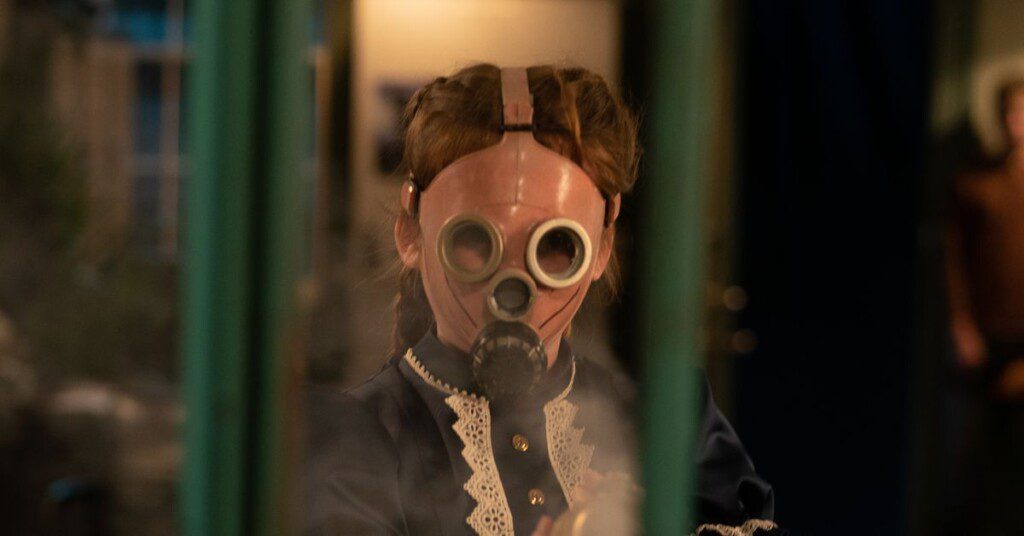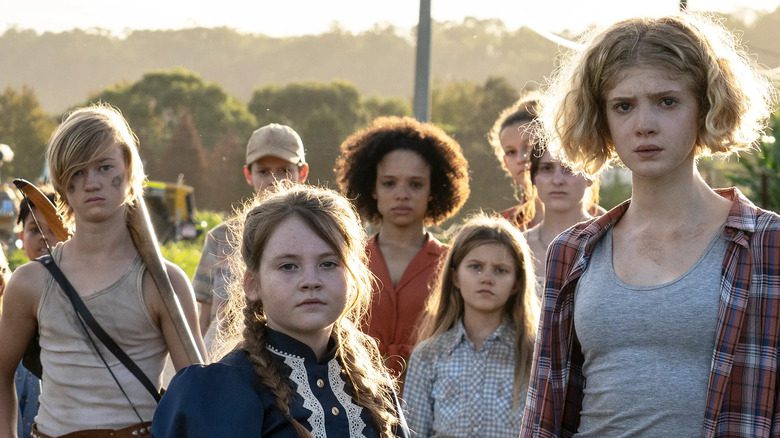“Nothing ever really dies in the corn.”
There have now been eleven Children of the Corn feature films, plus one short, which is enough that I’m comfortable saying: what are we doing here? Sure, the name has a decent amount of cachet, but why do we keep flocking to this story? All those films add up to 987 minutes, almost 17 hours of this story, and what do any of them have to say? Most franchises that overstay their welcome have a logical starting point; if I ran the studio that made Alien, I’d probably greenlight a ton of sequels too. But 1984’s Children of the Corn isn’t even good on its own, so why the hell are we spending the better part of an entire day putting it on film? I thought about running the series on CotC, the way I’ve done with Halloween or A Nightmare on Elm Street, but at the end of the day I don’t want to look at that much corn. There’s an interesting relationship between this film and the one it’s rebooting – the 1984 movie is worse than you remember, and this newest one is better than you’ve heard. But don’t get me wrong: it’s still pretty bad.
Like 2019’s Pet Sematary, this version of CotC isn’t a direct adaptation of Stephen King’s story; it’s more of a fan-fiction riff on similar themes, with some characters swapped around. What that means here is that instead of the established narrative of both the first film and King’s story – unsuspecting couple happens upon a deserted town where the kids have killed all the adults – we get something of a prequel, but that’s also a self-contained story. In short, we get to see exactly why the kids massacred all the adults in town. That’s not a bad idea by itself; the problem lies in the execution, which, like all films in this franchise, is borderline incompetent. It’s written and directed by a man (Kurt Wimmer of Equilibrium and Ultraviolet) who hadn’t directed a movie in almost fifteen years, and it shows on both fronts.
The strange thing about this movie is that there’s a lot of talk about corn – like, way more than you’re imagining. On the one hand, the town’s desperation adds some verisimilitude to the proceedings; Rylstone, NE is falling apart as the crops die and the townsfolk turn against each other. On the other hand, it muddies the water narratively: are the kids driven to homicide from the crushing weight of economic downturn, or from (spoiler) the need to appease a goofy monster made of corn? (More on that later, unfortunately.)
This Children of the Corn starts in a similar fashion to the one from 1984: with a massacre. While the original’s diner massacre was one of that mediocre film’s more effective set pieces, the bloodbath here is entirely off-screen. A kid named Boyd saunters out of the cornfield and sets about killing all the adults at the group home where he lives. This is the first baffling choice on Wimmer’s part, and the first example of the ineptitude prevalent throughout the film. By this I mean, Boyd is a character of outsized importance relative to his role in the film. Why not have the film’s actual antagonist, Eden (Kate Moyer, the film’s best part by lightyears), lead the massacre? In the original, Isaac didn’t take part in the diner killings, but he was at least present.

This is also where we find out that CotC has no idea what tone it wants to strike. The townsfolk pump halothane – a knockout gas typically used on livestock – into the orphanage to subdue Boyd, and wind up killing 15 orphans. You’d think this would break the spirit of the town, but nope! In the very next scene we see the sheriff quipping “There goes my re-election.” The adults in this town are so disproportionally cruel to children that it would be more of a shock if the kids didn’t kill them all. Tensions between the two generations reach a boiling point when our nominal heroine, Boleyn (Elena Kampouris), has the bright idea of handcuffing all the adults while they sleep and holding a mock trial for them.
It’s at this point where I started to pick up on what Children of the Corn is putting down. Much the same way that the 1984 original could be seen as an allegory of the Iran hostage crisis or the Satanic Panic, Wimmer’s version wants to be about the fight against climate change, which here – like in real life – is burdened by the “fuck you, I got mine” attitude of the town’s adults, which are a stand-in for Boomers. The message gets muddled, though, by the film’s choice of its primary antagonist, the aforementioned Eden, who is styled exactly like Greta Thunberg, down to the pigtails. And the monster in the cornfield further muddies the waters, because what the hell am I looking at.

So Children of the Corn doesn’t hold up as an allegory or a metaphor, but is it at least scary? Well, no, not at all. It’s a handsomely mounted production, though; the cinematography, by Andrew Rowlands, is eerie and effective, and the score, by Tim Count and Jacob Shea, arguably belongs to a better movie. The brightest spot here is Kate Moyer’s performance as Eden. Moyer is legitimately the only reason to watch this movie. She doesn’t steal the show; it was never anyone else’s to begin with. See if you can find a YouTube supercut of her scenes; they’re the only worthwhile part of the film.
As of now, there are no sequel plans for Children of the Corn. That’s due partly to the negative reception to this film, and the fact that it made no money during its brief theatrical run before it landed on Shudder. That’s a good thing – we’ve tried eleven times to make Children of the Corn happen, despite its stubborn refusal to be anything more remarkable than one of Stephen King’s hundreds of short stories. But this is horror, remember, and as a genre horror never lets things rest. As the film itself says, nothing ever really dies in the corn.

